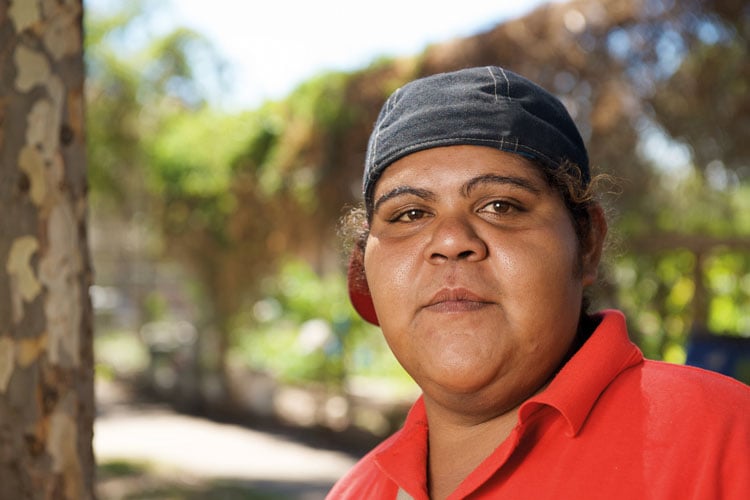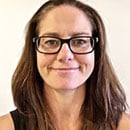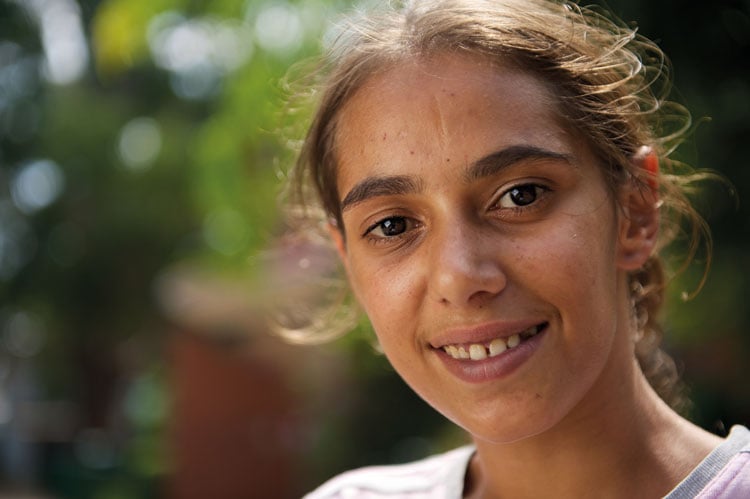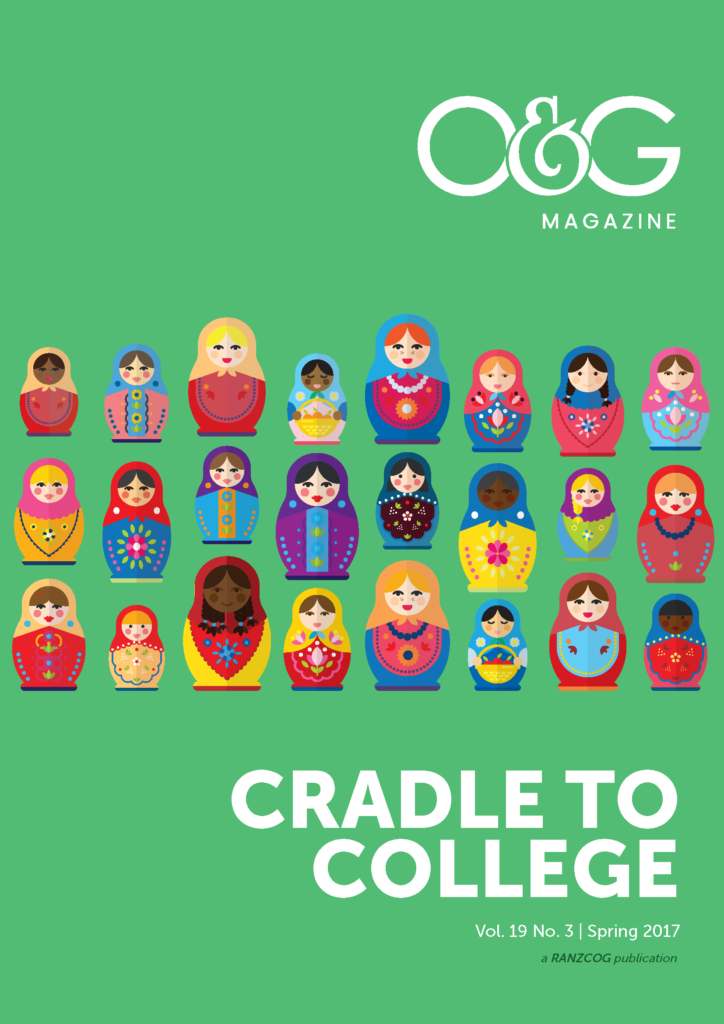In Australia, the Aboriginal and Torres Strait Islander population is proportionately younger, meaning a greater percentage are adolescents. In the WHO 2014 report titled ‘Health for the world’s adolescents – a second chance in a second decade’,1 the growing sense of urgency to address health in this stage of life is highlighted as one that has been somewhat neglected by policy makers and in the public health arena. The report emphasises the difference that adolescent health makes to the future of any society or community. It examines how the wider social context determines the varying experiences of this stage in life, despite it being biologically very similar worldwide. ‘Adolescents experience similar biological, cognitive, psychosocial and developmental processes – the timing and influence of these processes depend upon the environments in which they live, learn, play and work.’2
Many social factors are of particular importance during the period of adolescence: family; the environment; behavioural norms of peers; what happens at school; gender and sexual norms within communities; and other significant adults of influence in their lives. Sir Michael Marmot addressed Australians last year: ‘what happens to children has a profound affect on their life as adults, and hence their health. A poor start affects everything that happens subsequently.’3 Never has a truer statement been made when it comes to our indigenous young people here in Australia.
Any initiation of health-compromising behaviours in adolescence, such as using alcohol and drugs and taking sexual risks, will have not only immediate effects on health, but may also accumulate into longer term ill health in adulthood. This really highlights how important it is to get it right when adolescents may be malleable and more able to be positively influenced; getting this right in a culturally appropriate way, even more so.

Indigenous adolescents also face the challenge of growing up in two cultures – struggling to understand their own cultural identity and definitions of health, and facing the demands of the Western culture with its expectations and sometimes conflicting ideas about health. When it comes to approaching the Aboriginal Australian adolescent, (especially in relation to sexual health and pregnancy, risk-taking behaviours, menstrual and pubertal problems), it is important to provide culturally appropriate care, which starts with an understanding of the social context in which they live, and the cultural background that influences their behaviour and beliefs.
A review of the resources and literature available has provided great insight and has aligned with what has been my own experience over the last 10 years working in regional and remote Aboriginal communities in Far North Queensland.
The context
The concept of shame
- Shame refers to a sense of embarrassment, but more than that, a deep sense of inadequacy and disempowerment that accompanies it. It occurs in circumstances where the person’s dignity is targeted. It can occur in situations where cultural norms or taboos are breached, or felt when the person is not respected. When felt, it can be overwhelming for the person.4
- Due to this concept, sexuality and related matters are rarely openly talked about. Elders and parents may not discuss these matters with their adolescent daughters. Patients may have less understanding regarding sexual health issues and are far less likely to disclose these during consultation. Examination may be perceived as shameful and embarrassing. Shame may affect any young person agreeing to seek help for these issues in the first place.5
Health literacy and educational status
- In my experience, there is a lower level of knowledge of the normal pubertal changes and female anatomy in these young women. This may firstly deter women seeking help for gynaecological problems and, secondly, it may prevent understanding of required treatments and the purposes of such treatments. Assuming a basic knowledge of female anatomy and sex education during consultation may lead to a very unproductive appointment. The patient often will not disclose if they do not understand, leaving dissatisfied and unlikely to return.
- Levels of sex and contraceptive education in schools may be ‘too little, too late’, and some may not attend these sessions due to shame.6
- Leaving school before 18 has been shown to be associated with sexual activity and teenage pregnancy. Consistent themes surrounding lack of engagement with education have arisen in reviews into health in this age group.7
Rules of engagement
Culturally appropriate, community-driven and community-developed programs for adolescent health have been advocated by reviewers in this field for a long time. As an individual gynaecologist delivering care to Aboriginal and Torres Strait Islander adolescents, there are some key ‘rules of engagement’ one should consider in light of the above:
- Know something about the community the adolescent is from. Ask the patient if you don’t know, this ‘breaks the ice’. When Aboriginal people introduce themselves they often refer to their background, their land or their country. In turn, you may like to introduce yourself and try to do so in a non-threatening way, without using formal titles.
- Recognise your own values and cultural background, being careful not to impose your own ideology on to the teenager. Don’t make any assumptions about the patient, their beliefs or practices.
- Allow an opportunity for the patient to be accompanied by an Aboriginal/Torres Strait Islander health worker. Ask if they would like to have a family member or friend join them. Allow a chance to speak in their language if this is preferred. Give the option to see someone of the same gender.
- Build a relationship with your patient: ask them about themselves and use their name. Family and kinship are very important to Aboriginal and Torres Strait Islander peoples. Knowing about the young person’s family situation will help you understand the context in which they live as well as their influences.
- Approach sensitive subjects by asking permission to move into discussing them. Be aware that often the patient who often presents for another reason when they really have a private issue that they want to discuss and may take some time to disclose this.
- Don’t be uncomfortable with silence. Patients need time to think about what has been said and
are much more likely to enter discussion if they are not pressured to tell you their story or feel they are being interrupted. - Ensure privacy and be respectful and mindful of the concept of shame. Be aware of the fear of community gossip (Murri grapevine) and ensure that confidentiality is impeccably maintained. This can be of considerable importance in small communities. Disclose legal responsibilities when it comes to privacy.
- Use the right language and avoid medical jargon. Explain things simply and use visual aids and culturally appropriate pictures/resources to aid in explanations. If you realise the person does not understand, change tack.
- Use body language effectively. Aboriginal people are very good at reading body language and it will greatly influence how they feel, whether they disclose information and whether they return to see you again. If the patient is not making eye contact, respect this. Be sensitive and adjust your body language if you can see what you are doing is making that person uncomfortable. Do not sit too close or touch the patient during the history part of the consultation as they may feel uncomfortable with this.
- Ask about cultural beliefs and traditions. This will help greatly in understanding certain behaviours and will make it less likely that your own ideologies will be imposed, even if well intentioned. Examples of this are talking about sex, beliefs about contraception, termination, or pregnancy at an earlier age. You may need to ask how the patient would feel about a pregnancy, and what that would mean for her and her family. You may need to ask the reasons for not wanting an Implanon in the light of certain stigma in communities with regards to the device.
- Involve the adolescent in decisions; be engaging rather than dictatorial.
Gender roles, inequalities and identity
- A systematic review of the social determinants of sexual health in adolescent Aboriginal Australians in 2016 summarises these issues very well.8 Recurring themes within the reviewed literature include power imbalances in sexual relationships between young men and women and gendered violence. It also discusses the peer influence to maintain a sexual relationship as part of status within the group, irrespective of potential dangers, such as male dissatisfaction of condom use and sometimes assault.
- Identity formation in young Aboriginal adolescents has been reported to focus on sexual engagement and even early parenthood, particularly in more isolated places where there is little opportunity for employment or career. Parenthood is seen as a pathway to adulthood. Many teenage Aboriginal mothers in one study described their pregnancies as a ‘transformative event’ motivating them to make entirely positive changes to their life.9
Risk-taking behaviour
- One of the biggest influences on the sexual health of young Aboriginal people is the role of substance abuse.
Intergenerational trauma
- Previous experiences of the treatment of Aboriginal peoples in Australia have led to mistrust of the Western medical care providers. Many teenagers are likely to look to their friends for advice and other family members for help before engaging with the medical service.10
- Studies have examined how ‘entrenched social disadvantages stemming from historical inequalities, continue to impact young people’s health.’11
Conclusion
There is a remarkable opportunity within the adolescent years to positively influence and motivate our patients. There are many guidelines for managing clinical encounters with adolescents, such as the well-known HEADSS tool.12 It is important to approach any consultation with an adolescent with these basic strategies in mind, but these must also be incorporated into the social and cultural context of the Aboriginal and Torres Strait Islander young person.
As a gynaecologist, among the most challenging consultations with my Aboriginal adolescent patients have been how to explain those curly diagnoses such as androgen sensitivity syndrome or precocious puberty. Though it can be more challenging to approach all the common issues – such as abnormal bleeding, contraception, STI, PCOS – in a way the patient understands, in a way that motivates and empowers them to manage their condition, while also embracing their cultural background and integrating it into their experience of adolescence in a positive and meaningful way.
References
- WHO. Health for the world’s adolescents: a second chance in the second decade. Geneva. World Health Organisation. 2014. Available from: http://apps.who.int/adolescent/second-decade/files/1612_MNCAH_HWA_Executive_Summary.pdf.
- WHO. Health for the world’s adolescents: a second chance in the second decade. Geneva. World Health Organisation. 2014. Available from: http://apps.who.int/adolescent/second-decade/files/1612_MNCAH_HWA_Executive_Summary.pdf.
- Marmot M. Fair Australia: Social justice and the Health Gap. 2016 Boyer Lecture Series. ABC Radio. 2016. Available from: www.abc.net.au/radionational/programs/boyerlectures/series/2016-boyer-lectures/7802472.
- Mental Health First Aid Australia. Communicating with an Aboriginal or Torres Strait Islander adolescent: guidelines for being culturally appropriate when providing mental health first aid. Melbourne, 2014. Available from: https://mhfa.com.au/sites/default/files/Aboriginal-Adolecent-Communication-Guidelines-2016.pdf.
- Cultural Capability Statewide Team. Aboriginal and Torres Strait Islander adolescent sexual health guideline. Queensland Health, 2013. Available from: www.health.qld.gov.au/__data/assets/pdf_file/0018/161541/adolescent_sexual_health_guideline.pdf.
- Larkins S, Page P, Panaretto K, et al. Aboriginal and Torres Strait Islander adolescents and their attitudes and behaviours around contraception and pregnancy: lessons for policy and practice. 10th National Rural Health Conference, 2016. Available from: https://ruralhealth.org.au/10thNRHC/10thnrhc.ruralhealth.org.au/papers/docs/Larkins_Sarah_A6.pdf.
- MacPhail C, McKay K. Social determinants in the sexual health of adolescent Aboriginal Australians. Health Soc Care Community. 2016 Apr 29. doi: 10.1111/hsc.12355.
- MacPhail C, McKay K. Social determinants in the sexual health of adolescent Aboriginal Australians. Health Soc Care Community. 2016 Apr 29. doi: 10.1111/hsc.12355.
- Larkins S, Page P, Panaretto K, et al. Aboriginal and Torres Strait Islander adolescents and their attitudes and behaviours around contraception and pregnancy: lessons for policy and practice. 10th National Rural Health Conference, 2016. Available from: https://ruralhealth.org.au/10thNRHC/10thnrhc.ruralhealth.org.au/papers/docs/Larkins_Sarah_A6.pdf.
- Cultural Capability Statewide Team. Aboriginal and Torres Strait Islander adolescent sexual health guideline. Queensland Health, 2013. Available from: www.health.qld.gov.au/__data/assets/pdf_file/0018/161541/adolescent_sexual_health_guideline.pdf.
- MacPhail C, McKay K. Social determinants in the sexual health of adolescent Aboriginal Australians. Health Soc Care Community. 2016 Apr 29. doi: 10.1111/hsc.12355.
- Goldenring JM, Cohen E. Getting into adolescent heads. Contemp Pediatr. 1988;5(7):75-90.







Leave a Reply